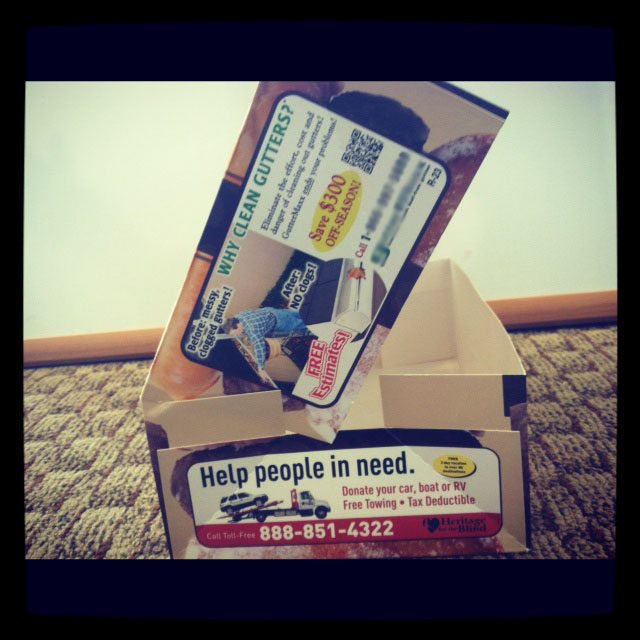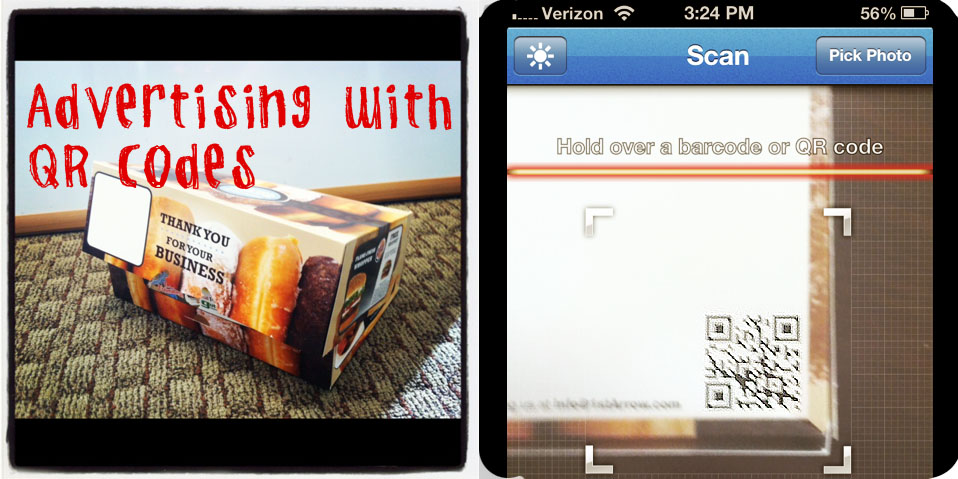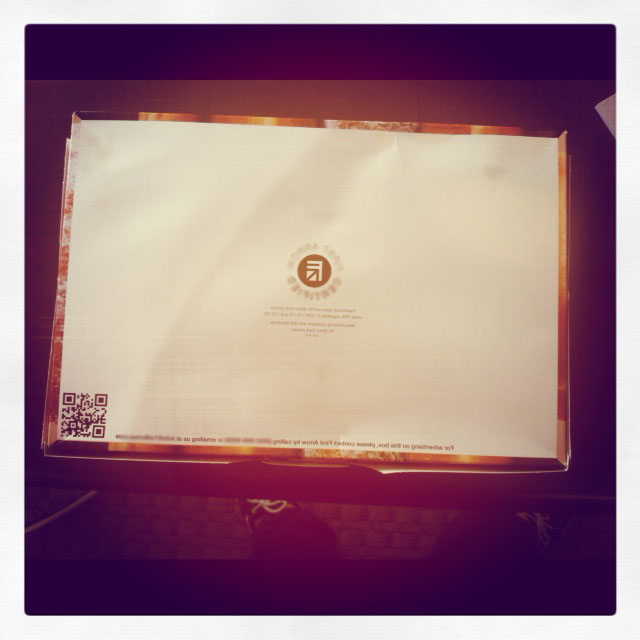A few days ago a mysterious box of kolaches showed up in our break room. By lunch they were gone and the kolache box, covered in advertisements from third parties, was about to be tossed. But, as an internet marketing company filled with inquisitive geeks, questions had to be asked. Where was the company branding from the kolaches-maker? No branding, no website, no phone number. Where did these QR codes from advertisers lead? As the microwave heated up frozen meal after frozen meal, we scrambled with our smart phones to follow these QR codes, judge the landing pages and philosophize about the right way to integrate aforementioned QR codes into this type of advertising, and where the heck these kolaches had come from.
Even after hunting down the kolache buyer, Jeff Powell anonymous, it remained a mystery. “I don’t remember where I got them,” he muttered, intently focusing on his computer screen while mastering the world of social media.
“But you bought them this morning!” I cried, exasperated.
“Yeah. It said ‘Donuts’.” And with that the kolache company was ne’er to be found.
The first lesson here is a long-lived one: for heaven’s sakes, make sure your branding is on everything!
But the second lesson delves deeper into the world of QR codes and the proper usage in an advertising capacity. Let’s first take a look at the QR codes on our box of kolaches.
QR Code 1

The first QR code is actually available twice on the box as the advertisement, from a gutter company, is printed twice. First let’s talk about the pros:
- The QR code is featured next to a callout coupon
- The QR code is easily scannable and leads to the company site
However, where this begins to fail is the code’s landing page. It’s nonexistent. Instead it redirects to the home page of the gutter company’s site. There is no trace of the coupon featured on the kolache box, and there is no contact form. In such cases, it’d be viable for the supplier to provide the products with a Short Link of the website they want the customers to be conveniently redirected to.
What we need to realize here is that QR codes are highly actionable. If someone takes the time to pull out their phone, click on the QR code scanner app, SCAN your code and land on your site, your site has to be prepared to capture their info immediately. As Jessica Velasco at Usabilla says “Visitors who arrive at your landing page are no longer a cold lead. Rather, they have already initiated a relationship; they are pre-qualified and interested in what you have to offer. Don’t let bad design ruin this amazing opportunity!”
What to include on a QR code landing page:
- A dynamic, hyperlinked phone number that a smart phone can dial upon click
- A contact form
- Reference to content surrounding QR code (in this case it would be the callout coupon on the kolache box)
- A mobile friendly design
- A heavily emphasized call-to-action
- Short and sweet content describing your company and your best qualities
You don’t need a developer or designer to create a glorious landing page, even though that is nice. Any business can create a quick and easy landing page integrating the above recommendations. Don’t waste this “initiated relationship” by making information capture difficult or impossible.
QR Code 2
QR code 2 produced a strange conundrum. This code, on the bottom of the box, was produced by the box makers themselves, an advertising solutions company. When we first scanned the code during lunch, it lead to a page about advertising on the company’s donut boxes and purchasing those boxes.
However, less than two hours later, when I rescanned the code it led to a broken site. The same issue arose when going to the actual site on a computer. (I’m sorry if scanning your QR code broke your site!)
Regardless we can still learn a few things.
- Make sure your QR code lives up to the consumer’s expectations. The QR code on the bottom of the kolache box was next to a line of information, but seemed unrelated to the information. There were no descriptors and nothing explaining where the code would lead. It’s a surprise! Maybe a free kolache coupon! Maybe free advertising space! No. Just a page explaining the donut box and the advertising procedures. This would be great if that’s what I were looking for, if that’s what I was prepared to see. But I wasn’t, so I clicked away in spite. Other consumers will too. Be sure the purpose of the QR code is loud and clear.
- Make sure your landing page works! The broken site was troubling. I had multiple coworkers scan the code to make sure it wasn’t just an issue with my phone or QR scanner. It wasn’t. If a consumer takes the time out of their life to scan a QR code it very better well work or else you’ll have an irritated, vengeful-demon-barber-type on your hands that will never trust your QR codes again.
What Has the Kolache Box Taught Us?
QR code advertisement is an end-to-end tool. There has to be complete follow through when it comes to planning that type of campaign.
What to remember when using QR code advertising:
- The code is easily scannable and lets the consumer know what to expect
- Your landing page works
- Your landing page is optimized with the QR code in mind (i.e. it references a coupon, a callout, or content surrounding the QR code)
- You don’t need a developer or a designer to create a fantastic landing page
- Include a contact form and a dynamic phone number, if nothing else
A QR code is a brilliant, underutilized tool, so it’s very exciting to see it being used by local companies on a kolache box. With these simple tips, these companies, and companies like them, will find themselves swimming in turnaround from this 21st century advertising tactic.
What QR code advertising tactics have worked for you? What haven’t? Is this a good marketing strategy for your company?




